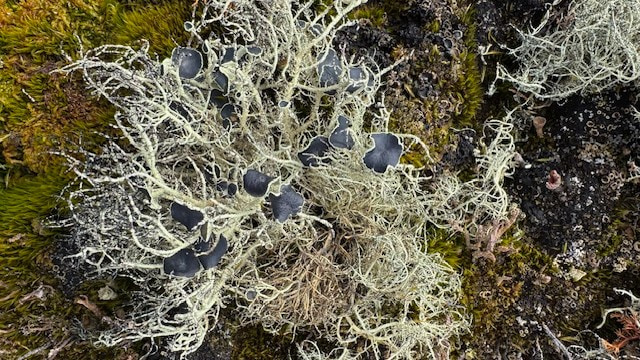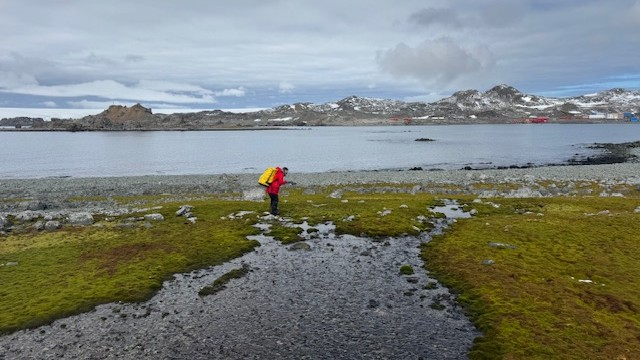Global team of researchers compile comprehensive picture of the species found in world's most remote continent
A pioneering new database is helping scientists gain a precise picture of the thousands of flora, fauna, and organisms that call Antarctica home.
For the first time, an international cohort of renowned researchers, including Professor Sharon Robinson AM from the University of Wollongong's (UOW) School of Science, has compiled a massive inventory of species, dating back to the early 1800s, from Earth's least understood and most remote continent.
The Antarctic Terrestrial Database, assembled by researchers from the Australian Antarctic Division, the British Antarctic Survey, and the Australian Research Council's Security Antarctica's Environmental Future (SAEF), contains more than 35,654 records of 1890 species of Antarctic organisms, drawn across six kingdoms of life.
The open access database was outlined in a research paper published on Thursday (30 January), titled 'A dataset of Antarctic ecosystems in ice-free lands: classification, descriptions, and maps', in the leading international journal, Scientific Data.
Professor Robinson, Deputy Director Science Implementation of SAEF, said there has long been a knowledge gap surrounding just how many species are in Antarctica.
"Although our understanding of Antarctica's biodiversity has increased in recent decades, until now we did not have an accurate inventory of who calls the continent home. Such an inventory is essential for conservation efforts in Antarctica; you need to know what is there to protect it adequately. For the first time we can get a good idea of where the biodiversity knowledge gaps are," Professor Robinson said from Antarctica's King George Island, where she is currently on a research expedition.

Lichen fruiting bodies on a moss bed in Antarctica. Photo: Sharon Robinson
The remoteness of the continent has meant that extracting samples of species can be difficult, particularly for those that inhabit far-flung, hard to access areas.
Larger animals, such as penguins, or what Professor Robinson called "charismatic megafauna", feature more prominently in the inventory, but that reflects how difficult it can be to find and record the smaller species of flora or the tiny animals.
Indeed, although Antarctica has fewer types of plants and land animals compared to other places, it still has a surprising variety of smaller life forms like fungi, algae, mosses, lichens, tiny animals, and microbes. These organisms live in different environments across the continent, showing a wide range of diversity despite the harsh environment.
"We know that samples have mainly been taken where access is easiest, which tends to be close to research stations and bases operated by national Antarctic programs," said Professor Robinson, who has spent close to 30 years investigating the health of plants in Antarctica and their ability to survive in such extreme conditions.
"It is not surprising penguins have more records than any other animals, birds are more commonly recorded than mosses, lichens, and microbes are hardly ever noticed. This does not mean there are less microbes than penguins, it just reflects the species humans notice most and like to study."
"There are big spatial gaps in our knowledge, even in ice-free areas of Antarctica. For example, we know that mosses and lichens are found on the tops of mountains sticking out from the ice far Inland, the problem is very few have been recorded yet."

UOW researcher Dr Mel Waterman samples moss on Ardley Island with Great Wall Station in the background during a trip to Antarctica. Photo: Sharon Robinson
The database comprises records from as far back as the 1800s, when early exploration of Antarctica began, but there was a significant increase in the number of records following the International Geophysical Year in 1957, when the international scientific community conducted an all-encompassing global study of the geophysical environment.
While there are still gaps in the Antarctic Terrestrial Database, Professor Robinson said it provides a strong foundation upon which scientists and governments can build their knowledge of life in Antarctica. It provides the basis for making sure that Antarctica's protected area network does the job it is supposed to do.
"Due to its isolation and extreme climate, Antarctica is one of Earth's least known regions. Antarctica is home to some unique animals, vegetation communities and microbes. This database is the first step in a better understanding of the continent's terrestrial biodiversity and is a key requirement for understanding and mitigating the impacts of climate change on the region's biodiversity."
About the research
'A dataset of Antarctic ecosystems in ice-free lands: classification, descriptions, and maps', by Anikó B Tóth, Aleks Terauds, Steven L Chown, Kevin A Hughes, Peter Convey, Dominic A Hodgson, Don A Cowan, John Gibson, Rachel I Leihy, Nicholas J Murray, Sharon A Robinson, Justine D Shaw, Jonathan S Stark, Mark I Stevens, John van den Hoff, Jane Wasley and David A Keith, was published in Scientific Data: https://www.nature.com/articles/s41597-025-04424-y.pdf






